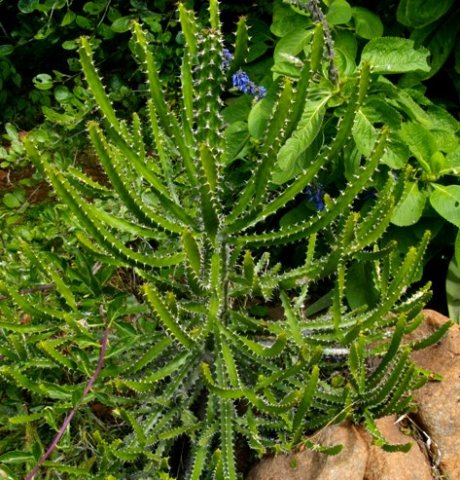Euphorbia grandidens

Author: Ivan Lätti
Photographer: Thabo Maphisa
Euphorbia grandidens, commonly the valleybush euphorbia and previously E. evansii, is a spiny candelabra-shaped, stem succulent tree reaching heights to around 16 m (SA Tree List No 350).
The main trunk has several main branches, resembling it on smaller scale. The numerous narrow, stem-tip branchlets are more three-angled than two-angled and twisted, from 1 cm to 2 cm in diameter. The faces or surfaces are concave, more than winged and not constricted into segments. Short sharp spines along the edges that are wavy from alternating lobes and notches with warty ridges.
The fruit is a three-lobed capsule, 8 mm in diameter.
The species distribution is coastal across the Eastern Cape, easterly in KwaZulu-Natal, inland in the Mpumalanga Lowveld and slightly into southeastern Limpopo, as well as in eSwatini and Mozambique.
The habitat is hot, dry woodland, dense scrub forest and karoid shrubland at low and medium altitudes. The species is not considered threatened in habitat early in the twenty first century (Smith, et al, 2017; Coates Palgrave, 2002; iNaturalist; http://redlist.sanbi.org).

